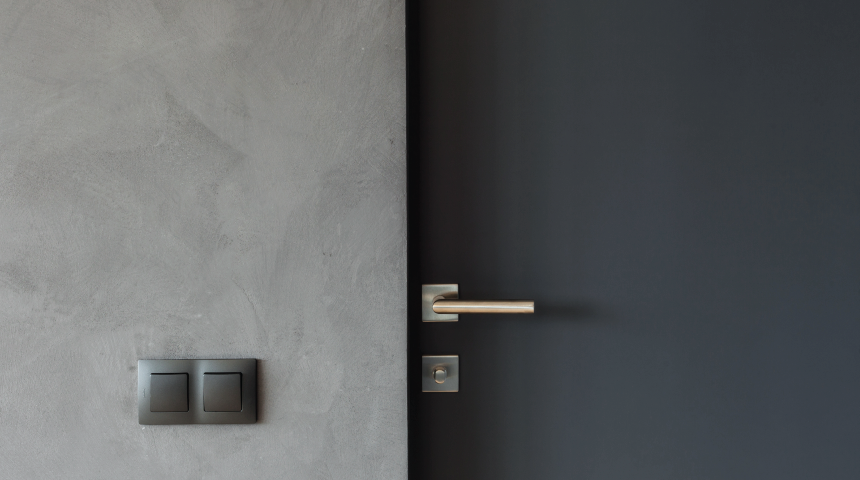
Enhancing Privacy and Acoustic Performance in Commercial and Government Spaces
Doors are designed to secure spaces, manage access, and ensure privacy. But in high-security environments, specialty doors like RF and STC models go even further—providing advanced protection against invisible threats. Discover how RF and STC doors safeguard sensitive facilities and why they’re essential for comprehensive security. Read on for insights into their unique roles and benefits.
RF and STC Doors Explained
A conventional door is typically made from wood, metal or fiberglass. Its function is intended to control access and enhance privacy. A conventional door may also be selected and installed for aesthetic purposes. While traditional doors are ideally installed in residential homes and specific commercial environments, they’re not the best choice if your facility needs to safeguard certain building areas from radio frequencies.
That’s where RF doors are useful. RF doors, or frequency shielding doors, are a special type of door that’s specifically designed to minimize the transmission of electromagnetic energy that passes through it and into a certain area. Unlike a standard building component, these doors are typically constructed of conductive materials like metal and various fabrics to provide the barrier necessary to block RF signals. RF doors are usually installed in areas where sensitive electronic equipment is located and could be impacted by electromagnetic interference. They may also be found in areas that don’t want to risk electronic eavesdropping and ensure systems and data are kept safe and secure.
While RF doors are designed to protect against electromagnetic interference and electronic eavesdropping, STC doors are designed to mitigate sound. STC stands for “Sound Transmission Class,” a rating system that defines how well a door reduces airborne sound transmission. The higher the STC rating, the better the door is at mitigating sound. In this context, doors with an STC rating of 50 or higher are usually considered excellent at sound mitigation. Conversely, standard hollow doors typically have an STC rating of 25-30.
Common Applications for RF and STC Doors
RF doors are ideally installed in any room that requires protection from electromagnetic interference (EMI) or radio frequency interference (RFI). In contrast, STC doors are installed in areas that require sound-mitigation performance.
Some of the common environments in which RF doors are found include:
- Data centers
- Government facilities
- Military facilities
- Research labs
- Commercial facilities
- Healthcare facilities (especially those with MRI machines and other advanced equipment)
STC doors are installed in environments that require extra levels of sound attenuation and privacy. Perhaps the most common application is a Secure Compartmented Information Facility, or SCIF. SCIFs are secure, controlled environments where confidential and often highly classified information is shared and discussed. The most well-known example of a SCIF is the “Situation Room” in the White House.
STC doors may also be found in schools, hospitals, office buildings and anywhere else where privacy is a priority.
Key Benefits of RF and Acoustic Doors
Like conventional doors, RF and acoustic doors enhance security within a facility. However, as detailed in previous sections, their approach significantly differs from that of a standard door. Such doors offer significant benefits under the right circumstances and when installed in the proper settings. Here’s a closer look at some of the key benefits of RF and acoustic doors:
Benefits of RF Doors
- Ideal for protecting sensitive electronic equipment, such as that found in data centers or medical centers.
- Ideal for safeguarding certain areas from electronic eavesdropping by preventing electromagnetic signal attenuation.
- Minimizing electromagnetic interference to ensure electronics function reliably.
- Enhancing overall data security and minimizing the risk of cyberattacks, data breaches and other similar events.
Benefits of Acoustic Doors
- Acoustic doors with high STC ratings minimize airborne sound transmission, enhancing privacy and allowing for more comfortable environments.
- Reduce sound leakage.
It’s also worth noting that both RF and acoustic doors can be complemented with other RF and sound-mitigation products. For example, RF window films, shielding paint, radiant barrier foils and other hardware can help complement any RF initiative and make an area even more secure from threats.
Selecting the Right RF and STC Doors
Selecting the proper RF and STC doors starts with understanding your space’s specific needs. Determine your desired level of sound reduction and/or RF protection. If both features are important to you, you can also look for hybrid doors combining RF attenuation and sound reduction.
We suggest working with an expert to help you select a product that meets your facility’s needs. Additionally, proper door installation is essential to create a seal that provides adequate protection and/or noise reduction.
For more information on RF and STC doors and the benefits they can offer to your specific facility, contact our parent company, Lockmasters, Inc today or request a door quote. As a leading provider of RF/IR solutions and shielding materials, we can help safeguard your assets and keep your building better protected from electronic threats. Contact us today to discuss your security needs and learn more about our range of solutions.
Since its founding in 1955, Lockmasters has been built on distribution leadership, product innovation, discovery and education, Lockmasters has empowered an entire industry to realize what is possible, forever changing the way we think and interact with physical security.
Related Blog Articles

Safeguard Sensitive Data with Emission Security
Safeguard Sensitive Data with Emission SecurityDid you know that emission...

Glass Fragmentation / Spall Control Window Film
Safety window film - Glass Fragmentation / Spall Control Window...
